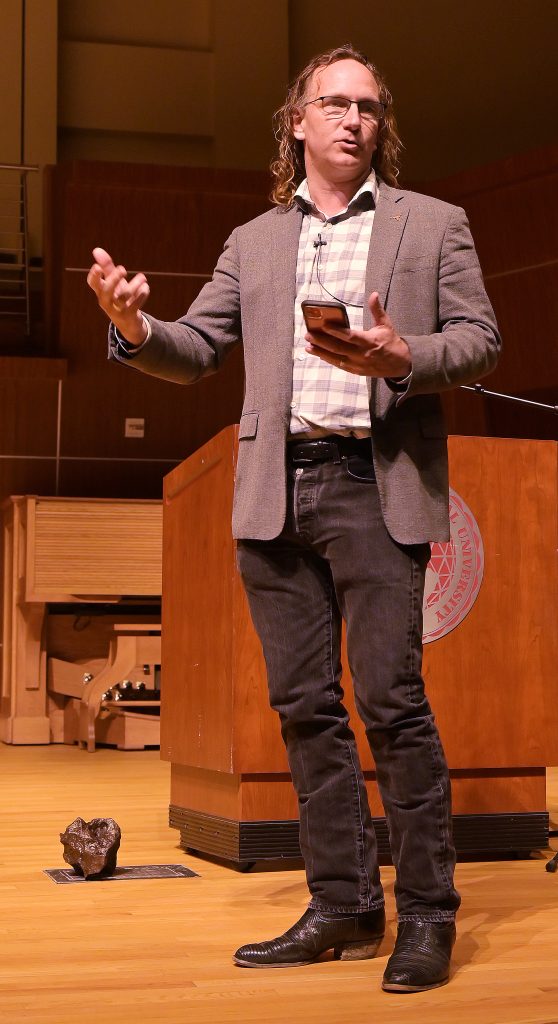SCIENCE: Asteroid lecture impacts TAMIU
By Alexia Rodriguez
Bridge contributing writer
Published Wednesday, May 18, 2022
TAMIU received a special lecture on the Chicxulub asteroid that might have caused the death of the dinosaurs.
The special lecture occurred on March 30, at the Center for the Fine and Performing Arts Recital Hall, presented by Sean Gulick, who is a co-chair of the Jackson School of Geosciences at the University of Texas–Austin.

Co-chair of the Jackson School of Geosciences at the University of Texas–Austin Sean Gulick speaks about the asteroid impact which allegedly killed the dinosaurs during his March 30 lecture in TAMIU’s Center for the Fine and Performing Arts Recital Hall.
“In 2016, Dr. Gulick and his team of researchers drilled into the floor of the Gulf of Mexico off the coast of the Yucatan Peninsula to collect core samples from the brim of this crater,” Lamar Bruni Vergara Planetarium Director Peter David said. “And it’s called Chicxulub because it’s the name of the small town that the rim goes through that’s on the land portion.”
The samples Gulick and his team collected revealed previous unknown details that changed the history of Earth.
At first, no one knew where the crater’s location was, so the same theory by two different research groups that an asteroid caused the extinction of the dinosaurs caused disbelief.
“Of course, it turned out the crater actually had been discovered in Mexico by the Mexican oil company back in the ‘50s and then put on a shelf, because they tried to drill it,” Gulick said. “They found weird rocks. They said,‘There’s no oil here, forget about it. Move on.’”
Mexican geologists in the late ‘80s rediscovered the crater.
Looking at gravity maps, to the northeast, they noticed a weird lump and in the center there was a bump toward the southwest of the crater. These uplifts and shifts led to a conclusion about the impact.
“So we now think we can make a statement that the impact came in at 60 degrees roughly from the east-northeast, so toward the west-southwest, which is a key observation,” Gulick said.
An important part of the lecture covered the impact of carbon dioxide. Compared to the asteroid impact, the human population has created much more carbon dioxide.
“Unfortunately one of the tradeoffs that’s occurring is that we’re now in our own extinction event,” Gulick said. “We are now on our way to the sixth extinction event and the estimate is that we may get to 25% extinction of mammals, 12% extinction in the birds, which by the way are the dinosaurs, so the ones that didn’t get killed off last time–12% of those are in danger in the new regime.”
This special lecture from Gulick provided informative research on what his team and he discovered about the Chicxulub asteroid that left most of the attendees questions answered and left knowing a little bit more about what caused the extinction of the dinosaurs.
